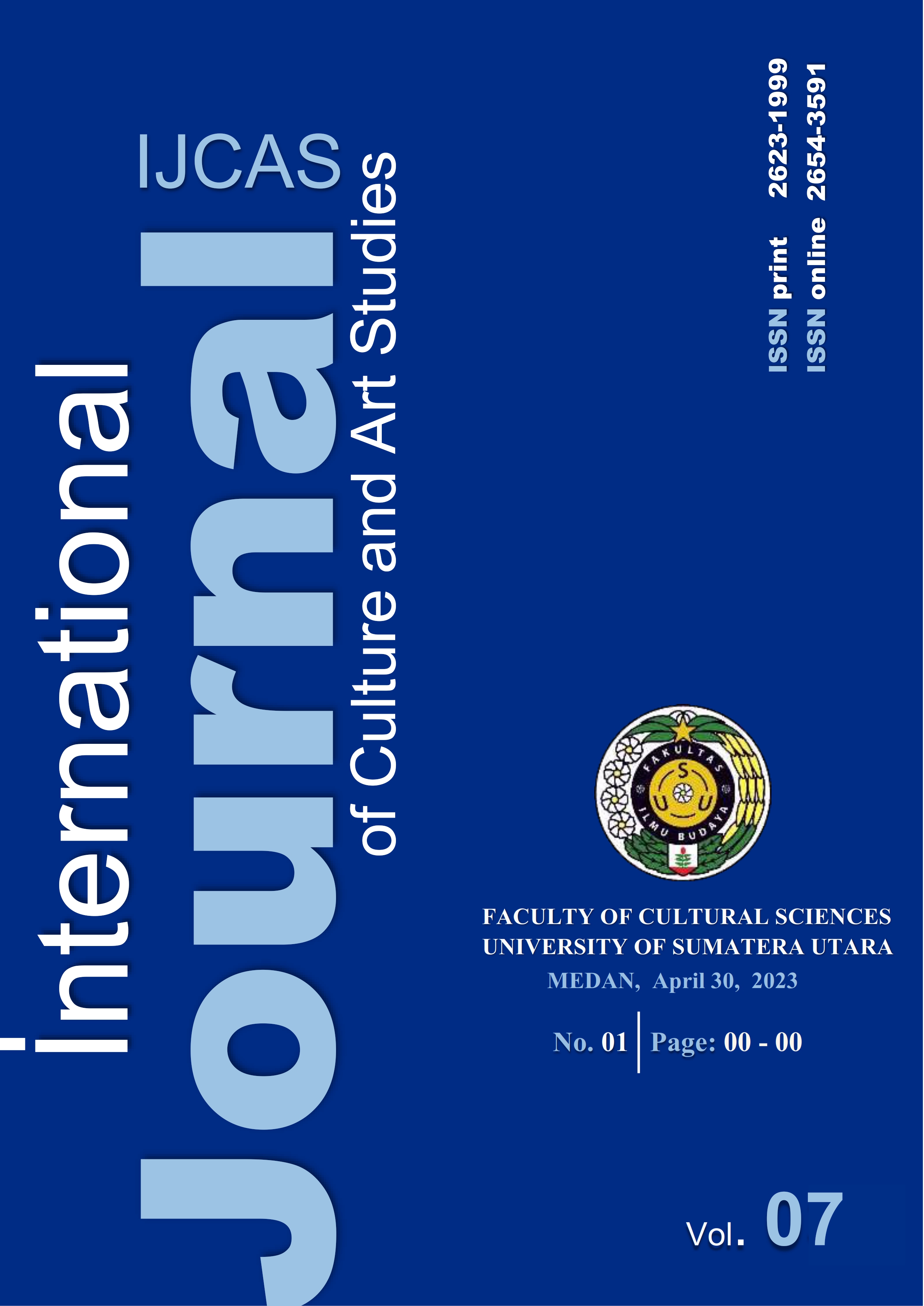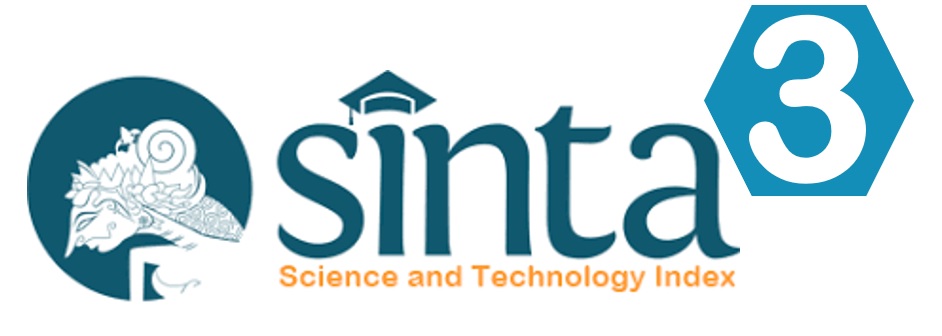The Traditional Karonese Oil as Ancestral Heritage
DOI:
https://doi.org/10.32734/ijcas.v7i1.11401Keywords:
Traditional medicine, Ancestral heritage, Karonese oil, Legal protectionAbstract
Every indigenous people are familiar with traditional medicine and medical techniques in order to maintain life in an atmosphere of support for community medicine and medical techniques. Traditional knowledge, especially traditional medicine, is Karonese Oil which has important benefit. This study examines the openness of the ancestral heritage of traditional knowledge of Karonese Oil. In this study, it is hoped that a renewal of regulations on traditional knowledge is closely related to regulations on the protection of traditional medicine because of medicine and techniques that have not received adequate legal protection. Data collection is carried out descriptive qualitative research, descriptive is a problem formulation that guides research to explore or portray the social situation to be studied thoroughly, broadly and in depth to craftsmen or traditional Karo oil activists. The data were analyzed qualitatively by using a legal theory approach as a rationale. Indigenous peoples rule on the protection of traditional knowledge of ancestral heritage of traditional Karo tribe oil. The Karonese tribe has various kinds of knowledge of medicine and traditional medicine techniques, especially Karonese oil. Updating on traditional knowledge that are closely related to regulations on the protection of traditional medicine due to inadequate medicines and techniques. This is in the form of regulations concerning the draft law on the protection and use of intellectual property, traditional knowledge and traditional cultural expressions, which until now have not been ratified by the Government.
Downloads
References
Barus, L. P. (2015). The Ritual of Making Karo Urut Oil in Jumapadang Village, Barusjahe District, Karo Regency. Buddayah: Journal of Anthropology Education, 176-179.
Culture, B. P. (2009). Practical Guidebook for Recording Indonesian Intangible Cultural Heritage. Jakarta: Ministry of Culture and Tourism of the Republic of Indonesia and UNESCO Office.
Daulay, Z. (2011). Traditional Knowledge: Concept, Legal Basis, and Practice. Jakarta: Raja Grafindo Persada.
Djulaeka. (2013). The Concept of Benefit Sharing as an Effort to Protect and Utilize Traditional Knowledge in Indonesia. Conference of the Indonesian IPR Teaching Association at Udayana University, Bali (p. 11). Bali: Udayana University,.
Dokhi, M., Siagian, T. H., Sukim, Wulansari, I. Y., Hadi, D. W., & Sambodo, N. (2016). Analysis of local wisdom in terms of cultural diversity. Jakarta: Center for Statistical Data, Education and Culture, Ministry of Education and Culture.
Fajar, M., & Achmad, Y. (2010). Dualism of legal research: normative & empirical. Yogyakarta: Student Library.
Ginting, E. (1999). Karo Religion: Reading Karo Religion with New Eyes. Kabanjahe: Abdi Karya.
Gobyah, I. K. (2003). Grounded in Wisdom. Retrieved 4 19, 2023, from Balipost: http://www.balaipost.co.id
Hafsoh, F. A. (2022). The Concept of Prior Informed Consent (Pic), Access And Benefit Sharing System (Abs) And Legal Protection Of Traditional Knowledge In Sui Generis Regulation. Semarang: Faculty of Sharia and Law, State Islamic University (Uin) Walisongoun State Islamic University (Uin) Walisongo State Islamic University (Uin) Walisongo Semarang.
Hamzah, M. G. (2004). The Role of Law in Efforts to Preserve Cultural Heritage. Amannagappa Journal of Law, 12.3.
Hartati, D. (2012). Legal Studies on Access and Profit Sharing in the Utilization of Marine and Fisheries Genetic Resources. Jakarta: University of Indonesia.
Human Rights Research and Development Agency, K. H. (2013). Intellectual Property Protection of Traditional Knowledge & Traditional Cultural Expressions of Indigenous Peoples. Jakarta: Alumni.
Indonesia. (2016). Law Number 13 Year 2016 on Patents. Jakarta: Government of the Republic of Indonesia.
Indonesia, K. B. (2008). Indonesian Dictionary,. Jakarta: Language Center, Ministry of National Education.
Indonesia, L. P. (2005). Developing Country Interests in Rights to Geographical Indications, Genetic Resources and Traditional Knowledge. Jakarta: Institute for International Law Studies, Faculty of Law, University of Indonesia.
Koentjaraningrat. (1985 ). Culture, Mentality and Development. Jakarta: Gramedia.
Koentjaraningrat. (1990). Introduction to the Science of Anthropology. Jakarta: Rineka Cipta.
Kurnianingrum, T. P. (2018). Legal Protection of Traditional Medicinal Knowledge. Review: Bridging Theory and Community Issues in Policy Formulation, 111-128.
Laksaman, N. (2018, August 26). Anthony Sinisuka Ginting and His Mother's Karo Sequential Oil. Retrieved 4 19, 2023, from Kompas.Com: https://olahraga.kompas.com/read/2018/08/26/06160008/anthony-sinisuka-ginting-dan-minyak-urut-karo-dari-sang-ibu
Melianti, Y., Ivanna, J., & Perangin-angin, R. B. (2016). Regulating Folklore Sui Generis in a Separate Law.Legal Issues, 75-84.
Meliono, I. (2011). Understanding the Nusantara thought and local wisdom as an aspect of the Indonesian education. Tawarikh, 221-234.
Moleong, L. J. (2008). Fundamentals of Normative Legal Research. Jakarta: Rajagrafindo Persada.
Nasution, J., Suharyanto, A., & Dasopang, E. S. (2020). Study of Ethnobotany of Karo Oil. Budapest International Research in Exact Sciences (BirEx) Journal 2.1, 96-100.
Pandapotan, S. (2018). Inventory of Ethnic Karo Local Wisdom in Ethnobotanical Utilization in Karo Regency. EHSS: Journal of Education, Humanities and Social Sciences, 40-47.
Saleh, G. (2010). Legal protection efforts for traditional knowledge in developing countries, especially Indonesia. Journal of Legal Supremacy.
Sari, E., & Sitepu, R. (2021). Legal Protection of Oukup Karo Treatment as a Form of Communal Intellectual Property Rights. Proceedings of the International Conference on Culture Heritage, Education, Sustainable Tourism, and Innovation Technologies - CESIT (pp. 57-63). Medan: SciTePress.
Sasongko, W., Lindati, D., & Oren Basta, A. (2018). Legal Protection of Karomel Traditional Medicines through the Traditional Knowledge Regime. Pactum Law Journal, 550-564.
Serfiyani, C. Y., Hariyani, I., & Serfianto, R. (2018). Smart Book of IPR and Cultural Heritage. Yogyakarta: UGM Press.
Simm, K. (2005). Benefit-sharing: an inquiry regarding the meaning and limits of the concept in human genetic research. Genomics, Society and Policy Journal.
Sitepu, W. (2014, February 21). Minak Pengalun Traditional Oil Potion from Tanah Karo. Retrieved 4 19, 2023, from Kompasiana: https://www.kompasiana.com/minyakkaro
Soemarjan, & Soenardi, S. (1964). A Flower of Sociology,. Jakarta: FEUI.
Surya Darma, I. (2008). Lecture Dictate: Ethnobotany. Yogyakarta: State University of Yogyakarta.
Sutedi, A. (2009). Intellectual Property Rights. Jakarta: Sinar Grafika.
Tarigan, S. (2008). The dynamics of the Karo people, culture and modernization. Medan: BABKI (Balai Adat Budaya Karo Indonesia).
Tarigan, S. (2017). Traditional Karo Medicine. Medan: BABKI (Balai Adat Budaya Karo Indonesia).
Tylor, E. B. (1871). Primitive Culture: Researches Into the Development of Mythology, Philosophy, Religion, Art, and Custom. New York: Brentano's.
WHO. (2000). Definitions Mediciens area traditional. Retrieved 4 19, 2023, from http://www.who.int/medicines/areas/traditional/definitions/en/.
WIPO. (2005). Intellectual property and traditional knowledge. Geneva: WIPO Publication.
Downloads
Published
How to Cite
Issue
Section
License

This work is licensed under a Creative Commons Attribution-ShareAlike 4.0 International License.













